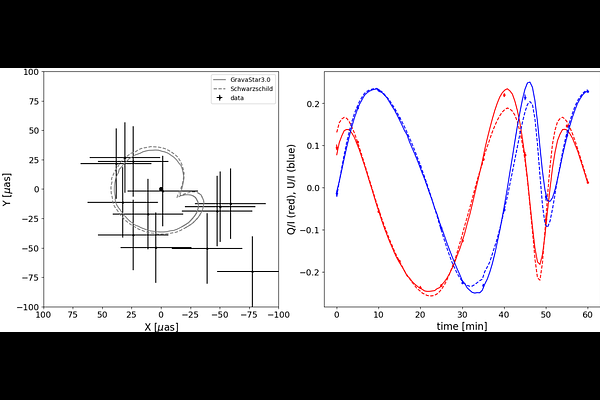Sagittarius A* near-infrared flares polarization as a probe of space-time I: Non-rotating exotic compact objects

Sagittarius A* near-infrared flares polarization as a probe of space-time I: Non-rotating exotic compact objects
Nicolas Aimar, João Luís Rosa, Hanna Liis Tamm, Paulo Garcia
AbstractThe center of our galaxy hosts Sagittarius~A*, a supermassive compact object of $\sim 4.3\times 10^6$ solar masses, usually associated with a black hole. Nevertheless, black holes possess a central singularity, considered unphysical, and an event horizon, which leads to loss of unitarity in a quantum description of the system. To address these theoretical inconsistencies, alternative models, collectively known as exotic compact objects, have been proposed. In this paper, we investigate the potential detectability of signatures associated with non-rotating exotic compact objects within the Sgr~A* polarized flares dataset, as observed through GRAVITY and future instruments. We examine a total of eight distinct metrics, originating from four different categories of static and spherically symmetric compact objects: Black Holes, Boson stars, Fluid spheres, and Gravastars. Our approach involves utilizing a toy model that orbits the compact object in the equatorial plane, at the Schwarzschild-Keplerian velocity. Using simulated astrometric and polarimetric data with present GRAVITY and future GRAVITY+ uncertainties, we fit the datasets across all metrics examined. We evaluated the detectability of the metric for each dataset based on the resulting $\chi^2_\mathrm{red}$ and BIC-based Bayes factors. Plunge-through images of ECOs affect polarization and astrometry. With GRAVITY's present uncertainties, only a compact boson-star model is discernible. GRAVITY+'s improved sensitivity allows detection of most exotic compact object models. However, enhancing the astrophysical complexity of the hot spot model diminishes these outcomes. Presently, GRAVITY's uncertainties limit us to detecting just one exotic compact object metric. With GRAVITY+'s enhanced sensitivity, we can expect to uncover additional exotic compact object models and use Sgr~A* as a laboratory for fundamental physics.